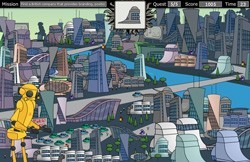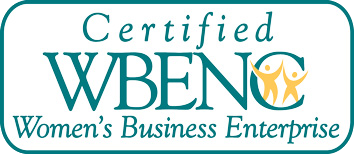Big 5 Agency Network Tripled Their Win Rate
- Global communication network had 3,000 employees familiar only with their own agency. This affected their ability to collaborate—negating the value of the network for clients.
- Staff represented the full range of ages, cultures, and languages, and while global management spoke English, many of the rank & file did not.
- Our Culture Assessment led to the creation of an online game, independent of language fluency, to be played during their inevitable downtime.
- Players went on “missions” that educated them on network capabilities, company profiles, and competitive advantages. Thirty-second company profiles were shown before they could see their scores, forcing familiarity with network partners.
- Intra-agency collaborations increased by 75% and win rate increased from ~12% prior year to 35%+.
- Relationships across the network were created and reinforced.
Turnover Dropped 10% and Performance Improved
- A scrappy underdog company tripled its revenue within 5 years and, of necessity, added systems crucial to profitability and growth.
- New systems were identified as “major advances,” which drove legacy staffers to sabotage the new systems to prove they were “right.”
- Corporate Compass® revealed that what looked like a culture problem was really a lack of communication and a failure to understand that the senior people themselves were part of the problem.
- Leadership Mindset® training was rolled out to correct misperceptions, shift perspectives, and increase staffers’ ownership of results.
- Turnover dropped by 10%, system sabotage stopped, process improvements were created by legacy staffers, and a new cohort of high-potential employees was identified from formerly disaffected legacy staffers.
Internal Successor Recognized and Empowered to Lead
A privately held company was in the middle of several major deals and its CEO was in poor health.
- A competent internal person was the right successor but her image and the perceptions of the Board led them to believe she didn’t have enough “gravitas” to lead the company.
-
Resolve It Sessions® answered, “How can we quickly change the Board’s perception of the internal candidate?” This was a sensitive session because the internal candidate was receiving feedback from peers who would report to her.
-
A visual strategist retooled the candidate’s style/behaviors/visual cues, a PR strategist created key messages, and media trained the candidate.
-
We leveraged a high-visibility corporate rebranding effort by making her the face of it so she could showcase her leadership qualities.
- Successful “rebrand” of internal candidate allowed for Board acceptance and a smooth transition. She has successfully led the company—which grew from 100 staffers to 24,000 (thru acquisitions)—ever since.
Politics Successfully Navigated Saving Business
- Lean staffing resulted in less experienced people being hired at the wrong level at the agency.
- These overtitled, underprepared, overly confident points of contact were creating politically complex and potentially revenue-losing situations.
- Management was marginally involved in the business. Without senior relationships the agency team was unsure how to navigate the situations the staff were creating.
- Client SOS used precision consulting to identify practical solutions and provided training to help the team confidently deliver narratives and help senior management understand their critical role in these relationships.
- Political situations were successfully navigated, staffers became experienced in dealing with complicated, delicate situations, and business was retained.
Siloed Teams Reconstituted, Increased Job Satisfaction
- Two critical groups couldn’t get along even though it was in their best interests.
- What started as a personality clash between leaders affected the culture and company reputation.
- Staffers were taking excessive sick days, productivity was dropping, and recruiting became difficult.
- Resolve It Sessions® focused on the key question: “Can these two groups embrace healthy collaboration?”
- Ad hoc Strategy Sessions determined that the only solution was to dismantle and recreate the teams.
- The tenured leaders refused to work together and left the company.
- A new leader was brought in to run the combined department, increasing collaboration, output, and job satisfaction.
Big 5 Agency Network Tripled Their Win Rate
- Global communication network had 3,000 employees familiar only with their own agency. This affected their ability to collaborate—negating the value of the network for clients.
- Staff represented the full range of ages, cultures, and languages, and while global management spoke English, many of the rank & file did not.
- Our Culture Assessment led to the creation of an online game, independent of language fluency, to be played during their inevitable downtime.
- Players went on “missions” that educated them on network capabilities, company profiles, and competitive advantages. Thirty-second company profiles were shown before they could see their scores, forcing familiarity with network partners.
- Intra-agency collaborations increased by 75% and win rate increased from ~12% prior year to 35%+.
- Relationships across the network were created and reinforced.
Turnover Dropped 10% and Performance Improved
- A scrappy underdog company tripled its revenue within 5 years and, of necessity, added systems crucial to profitability and growth.
- New systems were identified as “major advances,” which drove legacy staffers to sabotage the new systems to prove they were “right.”
- Corporate Compass® revealed that what looked like a culture problem was really a lack of communication and a failure to understand that the senior people themselves were part of the problem.
- Leadership Mindset® training was rolled out to correct misperceptions, shift perspectives, and increase staffers’ ownership of results.
- Turnover dropped by 10%, system sabotage stopped, process improvements were created by legacy staffers, and a new cohort of high-potential employees was identified from formerly disaffected legacy staffers.
Internal Successor Recognized and Empowered to Lead
A privately held company was in the middle of several major deals and its CEO was in poor health.
- A competent internal person was the right successor but her image and the perceptions of the Board led them to believe she didn’t have enough “gravitas” to lead the company.
-
Resolve It Sessions® answered, “How can we quickly change the Board’s perception of the internal candidate?” This was a sensitive session because the internal candidate was receiving feedback from peers who would report to her.
-
A visual strategist retooled the candidate’s style/behaviors/visual cues, a PR strategist created key messages, and media trained the candidate.
-
We leveraged a high-visibility corporate rebranding effort by making her the face of it so she could showcase her leadership qualities.
- Successful “rebrand” of internal candidate allowed for Board acceptance and a smooth transition. She has successfully led the company—which grew from 100 staffers to 24,000 (thru acquisitions)—ever since.
Politics Successfully Navigated Saving Business
- Lean staffing resulted in less experienced people being hired at the wrong level at the agency.
- These overtitled, underprepared, overly confident points of contact were creating politically complex and potentially revenue-losing situations.
- Management was marginally involved in the business. Without senior relationships the agency team was unsure how to navigate the situations the staff were creating.
- Client SOS used precision consulting to identify practical solutions and provided training to help the team confidently deliver narratives and help senior management understand their critical role in these relationships.
- Political situations were successfully navigated, staffers became experienced in dealing with complicated, delicate situations, and business was retained.
Siloed Teams Reconstituted, Increased Job Satisfaction
- Two critical groups couldn’t get along even though it was in their best interests.
- What started as a personality clash between leaders affected the culture and company reputation.
- Staffers were taking excessive sick days, productivity was dropping, and recruiting became difficult.
- Resolve It Sessions® focused on the key question: “Can these two groups embrace healthy collaboration?”
- Ad hoc Strategy Sessions determined that the only solution was to dismantle and recreate the teams.
- The tenured leaders refused to work together and left the company.
- A new leader was brought in to run the combined department, increasing collaboration, output, and job satisfaction.
A Forced Partnership Salvaged
- The client for a $1B+ brand had a contentious relationship with their advertising partner resulting in inefficient passive aggressive behaviors.
- They were unable to fire them because their parent company made a deal with the agency holding company.
- Corporate Compass® identified two key areas of conflict—team leadership, and communication.
- Resolve It Sessions® brought both parties to the table and gained agreement on specific issues within each area.
- Creative work and efficiency improved because communication and expectations were clear.
- When brand team members moved onto other business, they asked to work with this agency connection again.
Internal Successor Recognized and Empowered to Lead
A privately held company was in the middle of several major deals and its CEO was in poor health.
- A competent internal person was the right successor but her image and the perceptions of the Board led them to believe she didn’t have enough “gravitas” to lead the company.
-
Resolve It Sessions® answered, “How can we quickly change the Board’s perception of the internal candidate?” This was a sensitive session because the internal candidate was receiving feedback from peers who would report to her.
-
A visual strategist retooled the candidate’s style/behaviors/visual cues, a PR strategist created key messages, and media trained the candidate.
-
We leveraged a high-visibility corporate rebranding effort by making her the face of it so she could showcase her leadership qualities.
- Successful “rebrand” of internal candidate allowed for Board acceptance and a smooth transition. She has successfully led the company—which grew from 100 staffers to 24,000 (thru acquisitions)—ever since.
Workplace Dysfunction
[accordion clicktoclose=”true” openfirst=”true”]
[accordion-item title=”Marketing & Sales Revenue Generators are Complacent”]Challenge: The marketing and sales departments’ most senior salespeople had become complacent. They were barely making their numbers, had siloed their teams, and were unresponsive to management’s attempts to “team build.” Because these salespeople brought in significant revenue the company was hesitant to raise issues with them. Management, however, was not circumspect in their opinion that these individuals were “lazy” and taking advantage. By the time we got involved, everyone was job hunting.
 Insight: The Corporate Compass® process determined that the problem really stemmed from mismanaged and unrealistic expectations by management and staff, rather than an unmotivated workforce. The company was trying to recreate a time in its history when it had a cohesive and happy team along with double digit growth year-over-year. The sales team, far from being complacent, was actually delivering on unrealistic forecasts despite the resentment they felt because the CMO had not accounted for changing market conditions in their sales goals. Both sides were so invested in their version of the situation that every action, no matter how innocuous, was seen as “sending a message.”
Insight: The Corporate Compass® process determined that the problem really stemmed from mismanaged and unrealistic expectations by management and staff, rather than an unmotivated workforce. The company was trying to recreate a time in its history when it had a cohesive and happy team along with double digit growth year-over-year. The sales team, far from being complacent, was actually delivering on unrealistic forecasts despite the resentment they felt because the CMO had not accounted for changing market conditions in their sales goals. Both sides were so invested in their version of the situation that every action, no matter how innocuous, was seen as “sending a message.”
Identify what’s really getting in the way of success. Contact us today!
[/accordion-item]
[accordion-item title=”The Client/Agency Relationship is Deteriorating”]Challenge: The team for a billion-dollar brand was in a bad relationship with its advertising agency partner and was unable to fire them because of a deal put in place by the parent company. There was no consensus regarding the source of the difficulty but all agreed that neither the brand team nor the agency was happy with the relationship. Tensions were escalating and somehow they had to make it work.
 Insight: The Corporate Compass® process identified agreement on three areas of difficulty—team leadership, staffing, and communication—although there were nuances in how each party perceived the issues. Because the relationship was so contentious it was difficult for the different individuals to hear what their partners were saying, which made a third party a necessity.
Insight: The Corporate Compass® process identified agreement on three areas of difficulty—team leadership, staffing, and communication—although there were nuances in how each party perceived the issues. Because the relationship was so contentious it was difficult for the different individuals to hear what their partners were saying, which made a third party a necessity.
Identify what’s really getting in the way of success. Contact us today!
[/accordion-item]
[accordion-item title=”CEO Does Not Want to Relinquish Control”]Challenge: A very successful CEO was having difficulty letting go of the company he founded. Instead of appointing an individual to succeed him, he created a group of three co-presidents… and then proceeded to pit one against the other. The resulting dysfunction wreaked havoc within the company and created factions. While momentum carried them forward for a while, eventually this situation started to affect the bottom line as planned acquisitions were unable to be realized, quality control issues got out of hand, and sales forecasts started to slip. Board Members understood the issue but were hesitant to take action.
The Resolve It Sessions® focused on the key issue “How can we get the company back on track, be fair to the three co-presidents, and the CEO?” We came in via the Sales & Marketing Department who were trying to address sales declines, and through the Corporate Compass® process realized that the issue was much broader. Given the sensitivity of this situation and need for confidentiality, the core team was comprised of a few Board Members, HR, and Our Corporate Life.
 Result: An assessment of the co-presidents identified the one who was best suited to run the company. The remaining two had strengths that could be deployed in ancillary business units where they’d have roughly the same level of authority but with different titles and reporting structure. We identified the short- and long-term benefits for each person, incentivized them to accept the deal, and convince their followers to do so as well. We also created messaging to explain the change to the various stakeholders and planned how to execute the change with a minimum of disruption. Before we could move forward on this plan, we had to address the original issue: the CEO.
Result: An assessment of the co-presidents identified the one who was best suited to run the company. The remaining two had strengths that could be deployed in ancillary business units where they’d have roughly the same level of authority but with different titles and reporting structure. We identified the short- and long-term benefits for each person, incentivized them to accept the deal, and convince their followers to do so as well. We also created messaging to explain the change to the various stakeholders and planned how to execute the change with a minimum of disruption. Before we could move forward on this plan, we had to address the original issue: the CEO.
We first identified a special project that fit the CEO’s personal goals and would require a significant portion of his time and energy. As part of the sell in, it was made clear that success in this new endeavor was possible only if he focused on the project and minimized his involvement in the day-to-day business. To make a compelling case, we involved many of his influencers in the conversation. He fully bought in and actively engaged in identifying another Board Member who could immediately step in as acting CEO during the project. That Board Member/CEO candidate then broached the idea of changing the co-president situation into a solo position by making a solid financial case to the other Board Members. Once the Board approved it, the plan to realign the leadership was executed.
Contact Us to help address sensitive situations.
[/accordion-item]
[accordion-item title=”Leadership Talent is At Risk”]Challenge: The privately held company had recruited and invested in several senior executives in order to have bench strength when the CEO retired. As succession neared, each candidate was perceived by the Board Members to have a “fatal flaw,” which made it impossible to come to a consensus. Compounding the issue, the CEO was in ill health and the company was in the middle of several major deals. In desperation, they looked internally for candidates to fill in while they conducted a formal search. They identified a competent internal person who had staff support but the Board Members didn’t believe this person had enough “gravitas” to lead the company in the long run.
 The Resolve It Sessions® focused on the key issue: “How can we quickly change the perception of Board Members so that they see the internal candidate as viable?” This was a sensitive session because essentially this candidate was being told that he hadn’t managed his reputation effectively… by those who would ultimately report to him.
The Resolve It Sessions® focused on the key issue: “How can we quickly change the perception of Board Members so that they see the internal candidate as viable?” This was a sensitive session because essentially this candidate was being told that he hadn’t managed his reputation effectively… by those who would ultimately report to him.
Result: We piggybacked a leadership branding exercise with a planned corporate branding revamp in order to clearly identify the attributes and leadership qualities that the candidate could leverage on behalf of the company – while taking advantage of the fact that this project had high visibility with the Board Members. Once his leadership brand was identified, we deployed ViewPoint, which included a visual strategist to retool the candidate’s visual communication (personal style, behaviors, and other visual cues) and a PR strategist who created key messages and media trained the candidate so that he could work these messages into his communications. As a result, within 3 months the candidate received a vote of confidence from the Board and has successfully lead the company ever since.
Contact Us to help address sensitive situations.
[/accordion-item]
Office Politics
[accordion-item title=”Passive Aggressive Staffers are Undermining Growth”]Challenge: A company built around a fast growing brand had matured and, of necessity, added systems. These systems were crucial to profitability and growth. Legacy staffers were resistant to these changes, circumvented them, and longed for the “good old days.” They began using passive-aggressive tactics to undermine the new systems to prove that they were “right.”
 Insight: The Corporate Compass® process showed that what looked like a culture problem was really a lack of communication. When the new systems were introduced they were identified as “major advances” which was interpreted as veiled criticism by legacy staffers which caused them to hold on to old systems, justify them, and it impacted their understanding of the benefit of these changes.
Insight: The Corporate Compass® process showed that what looked like a culture problem was really a lack of communication. When the new systems were introduced they were identified as “major advances” which was interpreted as veiled criticism by legacy staffers which caused them to hold on to old systems, justify them, and it impacted their understanding of the benefit of these changes.
Contact Us to help address sensitive situations.
[/accordion-item]
[accordion-item title=”Internal Competition is Affecting Results”]Challenge: Two internal groups, critical to the manufacturing of their products, could not get along. Although it was in their best interests to collaborate, each person in one department had a visceral dislike of anyone associated with the other department. What started as a mere personality clash had become company lore—and was now affecting the culture of the company as a whole, as well as its reputation in the industry. From a practical standpoint it had gotten so bad that staffers were taking excessive sick days, productivity dropped, and recruiting became difficult.
The Resolve It Sessions® focused on the key question: “How can we get these two groups to embrace the idea of healthy collaboration?” We knew substantive change had to happen quickly given how much money was being lost due to unfilled orders, inefficiency, and inability to replace those who had left.
 Result: It was clear to everyone that the issue started at the top. The leaders of the two groups had a false sense of security since they had been at the company longer than anyone else. It was decided that the best way to get the two groups to cooperate was to dismantle them. The restructure would put individuals from the competing departments into small teams responsible for discrete deliverables. Everyone was moved to new locations within the building. The two leaders pitched a fit, refused to work together, and were fired. A new leader was brought in to run the combined department, which has worked successfully ever since.
Result: It was clear to everyone that the issue started at the top. The leaders of the two groups had a false sense of security since they had been at the company longer than anyone else. It was decided that the best way to get the two groups to cooperate was to dismantle them. The restructure would put individuals from the competing departments into small teams responsible for discrete deliverables. Everyone was moved to new locations within the building. The two leaders pitched a fit, refused to work together, and were fired. A new leader was brought in to run the combined department, which has worked successfully ever since.
Contact Us to solve the tough problems.
[/accordion-item]
Company Bureaucracy
[accordion-item title=”Advertising Network Constantly Reinvents the Wheel”]Challenge: Profitability was being drained through marketing inefficiencies even though the company had designed processes and established best practices across the globe. As the network added more offices, the drain on the bottom line became more pronounced. Past efforts unsuccessfully focused on holding local management accountable at each individual company.
 Insight: The Corporate Compass® process showed that what looked like inefficiency was really a lack of understanding. The network had more than 3,000 marketing and sales employees across the globe—many of whom didn’t speak English. Most of these employees were unaware of the global resources available to them and did not know the key players throughout the network.
Insight: The Corporate Compass® process showed that what looked like inefficiency was really a lack of understanding. The network had more than 3,000 marketing and sales employees across the globe—many of whom didn’t speak English. Most of these employees were unaware of the global resources available to them and did not know the key players throughout the network.
Identify what’s really getting in the way of success. Contact us today!
[/accordion-item]
[accordion-item title=”One Hand Doesn’t Know What the Other is Doing”]Challenge: The advertising network was expert in producing powerful communications for their clients, but their own staff—3,000 employees around the globe—knew only what their own agency did. The practical implication of this disconnect was that the wheel was being reinvented on a daily basis negatively affecting their ability to innovate. Compounding the issue was the fact that the staff represented the full range of ages, cultures, and languages, and while management across the globe spoke English, many of the rank and file did not.
 Result: We knew we’d have a win if we could entertain while informing. An online game was created that was not dependent upon language fluency for agency staffers to enjoy during the inevitable downtime that occurs during campaign development. Each player went on “missions” which exposed them to capabilities around the network. Built into the game were company profiles that were presented to users for 30 seconds at a time—much like an advertisement—so that regardless of the users’ intent, they became aware of—and able to identify—appropriate network companies to partner with.
Result: We knew we’d have a win if we could entertain while informing. An online game was created that was not dependent upon language fluency for agency staffers to enjoy during the inevitable downtime that occurs during campaign development. Each player went on “missions” which exposed them to capabilities around the network. Built into the game were company profiles that were presented to users for 30 seconds at a time—much like an advertisement—so that regardless of the users’ intent, they became aware of—and able to identify—appropriate network companies to partner with.
Contact Us to solve the tough problems.
[/accordion-item]
[/accordion]



